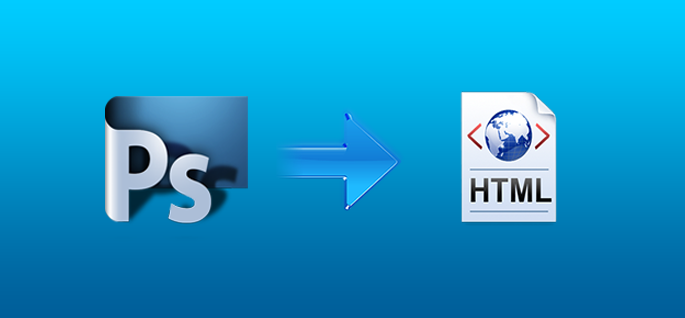Now people look for every answer on the internet. Things are no different when it come to shopping. Having a website for your business is the need of the hour. Then again, having a website that is responsive as well as interactive is very important. So you must go for PSD to HTML conversion. PSD to HTML conversion involves some steps and that are as follows:

Evaluate the document in Photoshop: To start a project, you need to look for some basic requirements and when it comes to PSD to HTML conversion, you need to evaluate every minute detail. If you ignore the small things, you may then end up with bugs and revising them will lead things out of scope. Again make sure you have understood all your client requirements so that you meet their expectations.
Slicing the PSD: After you have understood your PSD as well as the client requirement properly, the next thing you need to do is to slice the PSD into small portions and label it. This will help you to know the complete designing will take place and what good practices you can use. Again, labeling will help you and your client know the estimated time to complete the project. When it comes to PSD, slicing is important as it will let you know the different parts of the page as well as about the complete functionality and feel of the website. You can even slice the files using Photoshop and generate code in HTML which you can later change into your coding framework.
Get the tools: A large number of tools are available on internet which you can make use for slicing the PSD and converting a Photoshop file to a website. The main thing is that you can do simple yet clean coding by gathering all those important tools. One such tool is Firebug, which helps in debugging, editing as well as monitoring the HTML and CSS of the website along with JavaScript language. Some other tools like Gridset and 960 Grid is used during Photoshop to HTML conversion for the layout. A number of coding environment is also available which you can make use to get the work done.
Get the right code: When it comes to coding, developers follow different approach. But it is necessary to make sure that the codes are readable and maintainable as it makes them appear professional. There are some best practices you need to follow like making proper use of tags. Close the tags the moment you open one like <p></p>. Always have the <html></html> tags first and insert other tags within it. Again make sure you have proper nesting and indentation in your codes.
You can present your codes in an organized way by indentation. Again it helps to properly navigate through the codes in case you happen to encounter a bug. It also helps to study cross-browser compatibility like responsiveness of the website on different devices.
Test > submit > implement
Once every requirement is fulfilled, now you should test your project before submitting it to the quality analyst. It is necessary to test the project first as it helps to avoid errors as well as reduces the chances of getting back the project for revision. Once testing and submission stage is over and your customer is satisfied by your work, then it is time for you to implement it and show your work to the world.
Always make sure to keep your code short as well as W3C validated to make sure that the code is SEO and browser friendly. In future, you may be asked by your client to look into the codes in case of any issue. Or you may be asked to add or change some features or content. So keeping the code simple will help you a lot.
Always keep these coding guidelines in mind and keep on improving and updating your coding skills.
























